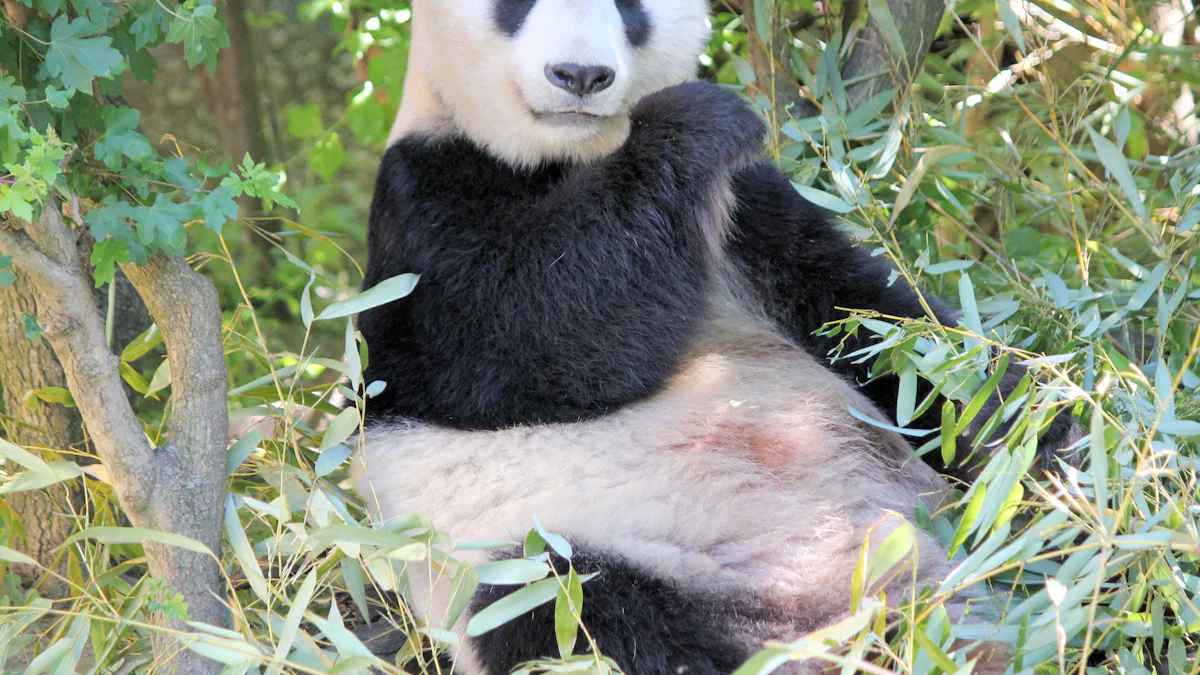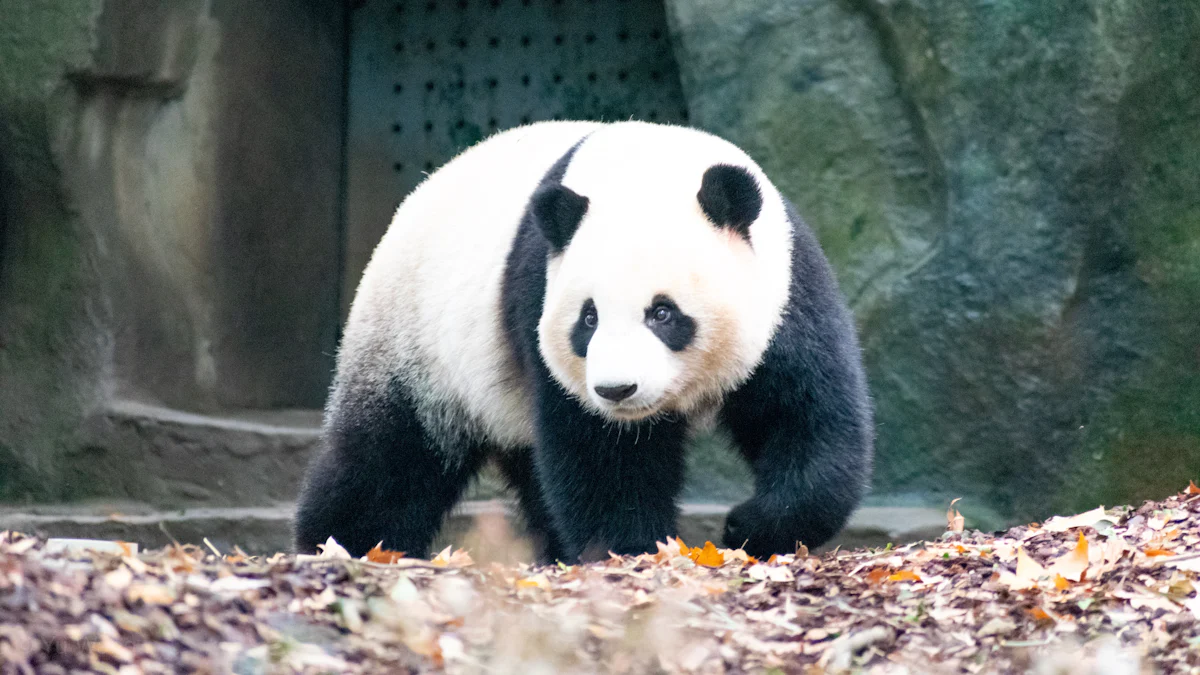
Giant pandas at the National Zoo hold an iconic status, captivating millions of visitors annually. The national zoo giant pandas are not only fascinating but also vital to conservation efforts. Since their first arrival in 1972, the pandas have drawn crowds, with visitor numbers soaring to an estimated 1.9 million each year. Their presence boosts public interest and engagement, making them a cornerstone of the zoo's educational mission. The pandas' unique appeal helps raise awareness about wildlife conservation, ensuring that you leave with a deeper understanding of these magnificent animals.
Key Takeaways
-
The National Zoo's giant pandas have been a symbol of conservation and diplomacy since their arrival in 1972, captivating millions of visitors each year.
-
Panda breeding at the zoo has evolved through research and innovation, leading to successful births and increased public interest in conservation efforts.
-
The zoo collaborates with Chinese institutions to enhance global panda conservation, ensuring the survival of this iconic species through shared knowledge and resources.
-
Educational programs and interactive exhibits at the zoo engage visitors, fostering a deeper understanding of panda behavior and the importance of wildlife conservation.
-
Recent arrivals, Bao Li and Qing Bao, represent a new chapter in 'panda diplomacy' and highlight the zoo's ongoing commitment to conservation and research.
-
Pandas serve as ambassadors for conservation, inspiring visitors to take an active role in protecting wildlife and supporting global conservation initiatives.
The Arrival of the First Pandas

Ling-Ling and Hsing-Hsing's Arrival
In April 1972, the National Zoo welcomed its first pair of giant pandas, Ling-Ling and Hsing-Hsing. These pandas arrived as a diplomatic gift from China, following President Nixon's historic visit to the country. The pandas' arrival marked a significant moment in U.S.-China relations, often referred to as "panda diplomacy." During a dinner in China, Pat Nixon expressed her admiration for giant pandas, prompting the Chinese premier to offer them as a gift. This gesture symbolized a new era of friendship between the two nations.
The pandas' arrival captivated the American public. On April 20, 1972, during the official welcome ceremony, Pat Nixon humorously predicted, "I think 'panda-monium' is going to break out at the zoo." Her words proved prophetic as the pandas quickly became the zoo's star attractions. Ling-Ling and Hsing-Hsing's presence at the National Zoo sparked widespread interest and fascination with these gentle giants.
Early Years at the Zoo
Ling-Ling and Hsing-Hsing spent two decades at the National Zoo, becoming beloved figures in the hearts of visitors. During their time, they produced five cubs, although none survived past infancy. Despite these challenges, the pandas played a crucial role in advancing scientific research on giant pandas. The zoo's scientists began studying panda behavior, diet, and reproduction, laying the groundwork for future conservation efforts.
The pandas' early years at the zoo were marked by both triumphs and setbacks. While the loss of their cubs was heartbreaking, the knowledge gained from these experiences contributed to a deeper understanding of panda biology. Ling-Ling and Hsing-Hsing's legacy lives on, as their presence helped establish the National Zoo as a leader in panda conservation and research.
Breeding Successes and Challenges
First Breeding Attempts
You might wonder about the challenges faced in breeding giant pandas at the National Zoo. Initially, the zoo encountered numerous obstacles. Giant pandas have a notoriously low reproductive rate, which made early breeding attempts difficult. The zoo's team worked tirelessly to understand panda behavior and biology. They observed the pandas closely, noting their mating habits and preferences. This research laid the foundation for future successes.
In the early years, the zoo relied on artificial insemination due to the pandas' reluctance to mate naturally. Scientists collected and preserved semen from male pandas, ensuring genetic diversity. This method increased the chances of successful births. Over time, the zoo's efforts paid off. Behavioral research provided insights that improved natural mating success rates. The dedication of the zoo's staff played a crucial role in overcoming these initial hurdles.
Notable Births and Cubs
The National Zoo celebrated its first successful panda birth in 2005. Tai Shan, the cub, quickly became a beloved figure. His birth marked a significant milestone in the zoo's breeding program. Visitors flocked to see the adorable cub, and Tai Shan's presence boosted public interest in panda conservation.
Since then, the zoo has witnessed several successful births. Each new cub represents a triumph over the challenges of breeding pandas in captivity. These births contribute to the global effort to preserve this endangered species. The zoo's commitment to research and innovation has led to dramatic increases in successful captive births over the past two decades.
The national zoo giant pandas continue to captivate visitors and inspire conservation efforts. Their story is one of perseverance and dedication. As you explore the zoo, you become part of this ongoing journey to protect and preserve these magnificent creatures.
Conservation Efforts and Collaborations

Partnerships with China
You might find it fascinating that the National Zoo's giant pandas are part of a broader international collaboration. The National Zoo and Conservation Biology Institute (NZCBI) entered into a Giant Panda Cooperative Research and Breeding Agreement with the China Wildlife Conservation Association. This agreement fostered cooperative ventures between the United States and China, enhancing conservation efforts for these beloved animals.
In 2000, the arrival of giant pandas Mei Xiang and Tian Tian at the National Zoo marked a new chapter in this partnership. Their presence drew millions of fans and provided an opportunity for research and conservation collaboration. American zoos, including the National Zoo, struck a deal with the Chinese government in 1998 to rent pandas for conservation purposes. The money from these rentals contributed significantly to conservation efforts, both in the wild and in human care.
The San Diego Zoo Wildlife Alliance also played a crucial role in panda conservation. Their 30-year partnership with leading conservation institutions in China focused on protecting and recovering giant pandas and bamboo forests. This collaboration resulted in the arrival of pandas at the San Diego Zoo and advanced giant panda conservation efforts, leading to a status change from Endangered to Vulnerable.
Research and Scientific Contributions
The National Zoo's giant panda team works tirelessly with colleagues in China to advance conservation efforts. Their research focuses on innovating new techniques and pursuing studies for the health and welfare of giant pandas. This collaboration has led to significant scientific contributions, enhancing our understanding of panda biology and behavior.
The zoo's scientists study various aspects of panda life, including diet, reproduction, and habitat needs. This research not only benefits the pandas at the zoo but also contributes to the conservation of giant pandas in the wild. By sharing knowledge and resources, the National Zoo and its partners continue to make strides in preserving this iconic species.
The national zoo giant pandas serve as ambassadors for conservation, inspiring you to learn more about these magnificent creatures and the efforts to protect them. As you explore the zoo, you become part of a global community dedicated to ensuring a future for giant pandas.
Public Engagement and Education
Panda Exhibits and Programs
When you visit the National Zoo, the giant panda exhibits offer a unique opportunity to learn about these fascinating creatures. The zoo has designed interactive displays that engage you in understanding panda behavior, diet, and conservation efforts. These exhibits aim to educate visitors about the importance of biodiversity and the role pandas play as a flagship species for conservation.
The zoo also offers various programs that allow you to delve deeper into the world of pandas. Educational workshops and guided tours provide insights into the daily lives of the pandas and the challenges they face in the wild. You can participate in hands-on activities that highlight the zoo's conservation efforts and the scientific research conducted to ensure the survival of giant pandas.
The National Zoo's commitment to education extends beyond the exhibits. The zoo regularly updates its website with information about panda conservation, offering online resources and videos that you can access from anywhere. This digital content enhances your learning experience and keeps you informed about the latest developments in panda conservation.
Media and Cultural Impact
The national zoo giant pandas have captured the hearts of people worldwide, thanks in part to their significant media presence. News outlets frequently cover panda-related events, such as births and conservation milestones, bringing global attention to the zoo's efforts. This media coverage plays a crucial role in raising awareness about the importance of protecting these iconic animals.
Pandas have also become cultural symbols, representing peace and friendship between nations. The concept of "panda diplomacy" highlights the role of pandas in fostering international relations, particularly between the United States and China. This cultural impact extends to popular media, where pandas often appear in films, books, and merchandise, further solidifying their status as beloved creatures.
The zoo's efforts to engage the public through media and cultural initiatives have contributed to a broader understanding of panda conservation. By sharing stories and updates about the pandas, the zoo inspires you to take an active interest in wildlife preservation. This engagement not only benefits the pandas but also supports global conservation efforts.
Recent Developments and Future Plans
Current Panda Residents
You might be curious about the current residents at the National Zoo. The zoo recently welcomed two new giant pandas, Bao Li and Qing Bao. They arrived on October 15, 2024, as part of a 10-year agreement with China. These pandas now reside in a newly renovated habitat on the Asia Trail, which will open to the public in January 2025. This habitat reflects the landscapes of their native regions in China, providing a comfortable and enriching environment for them.
The arrival of Bao Li and Qing Bao marks a significant moment in "panda diplomacy" between the United States and China. The previous pandas, Tian Tian, Mei Xiang, and Xiao Qi Ji, returned to China, making way for this new pair. You can look forward to seeing these pandas thrive in their new home, where they will continue to captivate visitors and contribute to conservation efforts.
Future of the Panda Program
The future of the National Zoo's panda program looks promising. The zoo remains committed to its mission of conservation and education. The partnership with China ensures that the zoo will continue to play a vital role in global panda conservation efforts. The zoo plans to focus on research and breeding programs, aiming to increase the population of giant pandas both in captivity and in the wild.
You can expect the zoo to enhance its educational programs, offering more opportunities for you to learn about these magnificent creatures. The zoo's dedication to public engagement will ensure that visitors leave with a deeper understanding of the importance of wildlife conservation. As the National Zoo continues to innovate and collaborate with international partners, the future of the giant panda program remains bright.
The national zoo giant pandas serve as ambassadors for conservation, inspiring you to take an active interest in preserving these iconic animals. By visiting the zoo and participating in its programs, you become part of a global effort to ensure a future for giant pandas.
The journey of the national zoo giant pandas reflects a remarkable history of conservation and public engagement. From the arrival of Ling-Ling and Hsing-Hsing to the recent addition of Bao Li and Qing Bao, these pandas have captivated hearts and minds. Their presence in zoos worldwide underscores a global commitment to preserving this beloved species. Conservation efforts have led to a positive impact on panda populations, with numbers increasing in the wild. The National Zoo remains dedicated to its mission, focusing on research, breeding, and education to ensure a bright future for giant pandas.
FAQ
What makes giant pandas so special?
Giant pandas captivate people with their unique black-and-white fur and gentle demeanor. You might find it interesting that they primarily eat bamboo, which makes up about 99% of their diet. Their rarity and vulnerability in the wild add to their allure, making them symbols of wildlife conservation efforts worldwide.
How do giant pandas contribute to conservation?
Giant pandas play a crucial role in conservation as flagship species. By focusing on their preservation, you help protect entire ecosystems. Efforts to save pandas also benefit other species that share their habitat. The National Zoo's panda program raises awareness and funds for broader conservation initiatives.
Why are pandas considered diplomatic symbols?
Pandas have long served as symbols of peace and friendship between nations. The term "panda diplomacy" refers to China's practice of gifting or loaning pandas to other countries as a gesture of goodwill. This tradition began in the 1970s and continues today, fostering international collaboration in conservation.
What challenges do pandas face in the wild?
In the wild, pandas face threats like habitat loss and fragmentation. Human activities, such as deforestation and agriculture, reduce their natural habitat. Climate change also impacts bamboo availability, their primary food source. Conservation efforts aim to address these challenges and ensure a sustainable future for pandas.
How does the National Zoo support panda research?
The National Zoo conducts extensive research on panda biology and behavior. Scientists study their diet, reproduction, and health to improve captive breeding programs. This research contributes to global efforts to understand and protect pandas. By visiting the zoo, you support these vital conservation initiatives.
What about pandas at other U.S. zoos?
Several U.S. zoos house giant pandas, including the San Diego Zoo and Zoo Atlanta. These institutions collaborate with China on conservation and research efforts. Each zoo plays a role in raising awareness and educating the public about the importance of preserving this iconic species.
How can you help support panda conservation?
You can support panda conservation by visiting zoos that house pandas and participating in their educational programs. Donations to conservation organizations also make a difference. By spreading awareness about the challenges pandas face, you contribute to global efforts to protect these beloved animals.
What is the future of giant pandas in captivity?
The future of giant pandas in captivity looks promising, thanks to ongoing research and international collaboration. Zoos continue to improve breeding programs and enhance habitats. These efforts aim to increase the captive panda population and support reintroduction initiatives in the wild.
How do pandas impact cultural perceptions?
Pandas hold a special place in popular culture, often symbolizing peace and harmony. They appear in films, books, and merchandise, capturing the hearts of people worldwide. This cultural impact raises awareness about their conservation and encourages you to take an active interest in wildlife preservation.
What can you expect when visiting the National Zoo's panda exhibit?
When you visit the National Zoo, you can explore interactive exhibits that educate you about panda behavior and conservation. The newly renovated habitat on the Asia Trail offers a glimpse into the pandas' natural environment. By engaging with these exhibits, you gain a deeper understanding of the importance of protecting these magnificent creatures.